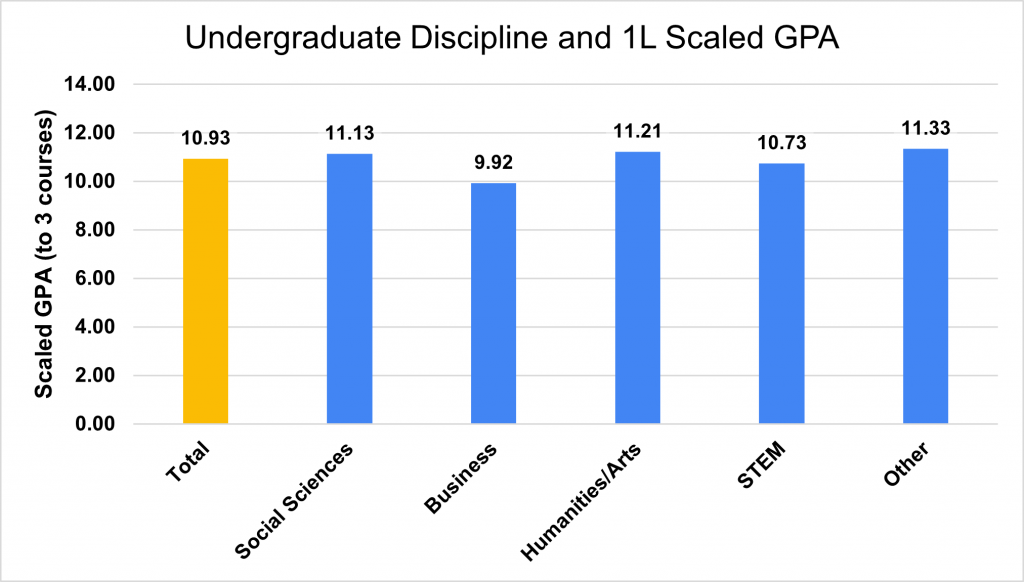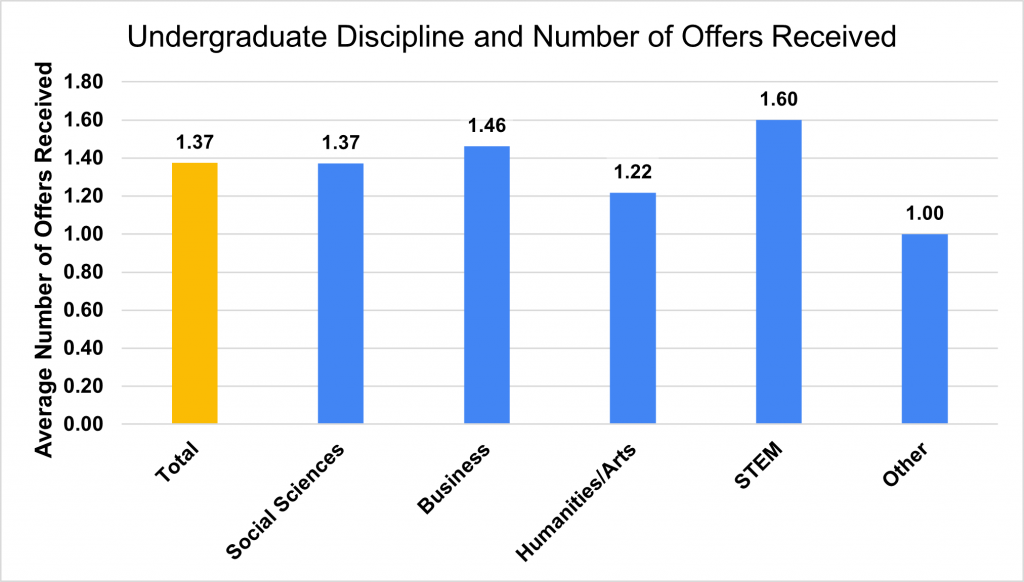Undergraduate degree not indicative of performance in 1L classes and 2L recruit
It may seem intuitive that students who come from social sciences and humanities backgrounds are better prepared for law school than students with STEM backgrounds. Students who spend more time reading and writing in their undergraduate education may be better suited to dealing with the copious amounts of (typically convoluted) reading involved in law school. However, this belief is erroneous. Science students who have made their way to law school do not find it any more difficult to succeed in law school than their fellow social sciences or humanities students. The below data shows that students from all undergraduate disciplines were equally successful in securing offers in the 2L 2021 Toronto Summer Recruit and in their 1L grades.
This is an analysis of the 91 students who participated in the 2021 Toronto 2L Summer Recruit Survey.
- Social sciences: political science, international development, criminology, sociology, psychology, gender studies, law,
One student with a “law” undergraduate education was included into both “Social Sciences” and “Humanities” categories. This is why the total number of students in the table counts as 92 instead of 91. and paralegal studies. - Business: business and economics.
This includes one student who indicated they studied both economics and statistics. - Humanities/Arts: classics, history, philosophy, religion, English, linguistics, communications, law, and liberal arts.
- STEM: math, science and health science.
- Others: interdisciplinary, visual or performing arts, those who prefer not to disclose, and blank entries (implied as preference not to disclose).
Once students were grouped in their respective disciplines, their 1L Scaled GPA was computed


Number of Students by Undergraduate Program
| Total | Social Sciences | Business | Humanities/Arts | STEM | Other | |
| Number of Students | 92 | 35 | 13 | 23 | 15 | 6 |
| Percentage of Students | 100% | 38% | 14% | 25% | 16% | 7% |
| 1L Scaled GPA (to 3 courses) | 10.93 | 11.13 | 9.92 | 11.21 | 10.73 | 11.33 |
| Average Number of Offers | 1.37 | 1.37 | 1.46 | 1.22 | 1.60 | 1.00 |





